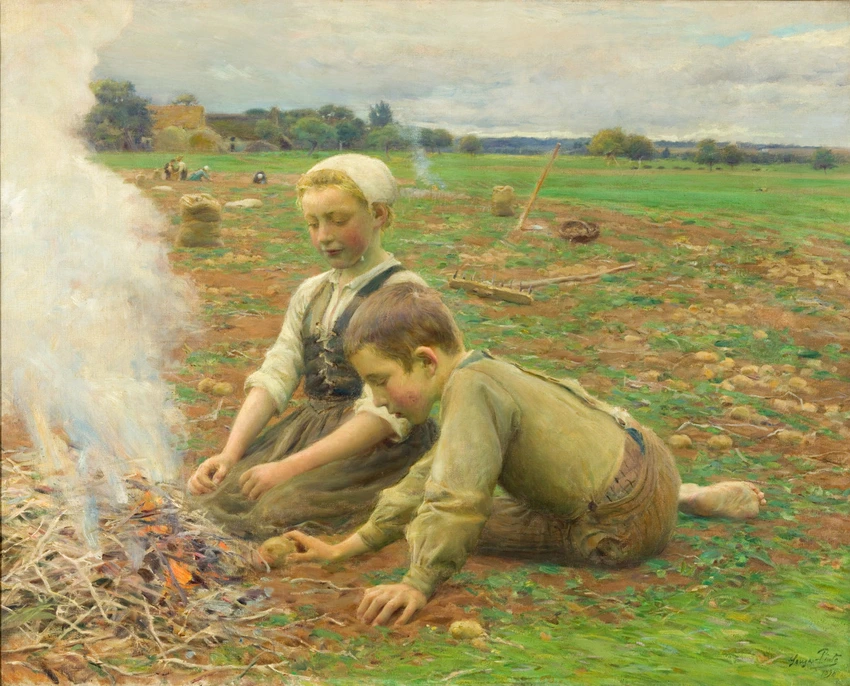La Récolte des pommes de terre
Originally from the island of Terceira in the Azores, José Julio de Souza Pinto arrived in Porto (Portugal) as a very young man, and became a brilliant art student. In 1880 he obtained a grant enabling him to study in Paris, where he worked at the Ecole des Beaux-arts and at Alexandre Cabanel's studio. The following year, in 1881, he exhibited the portrait of one of his compatriots at the Salon of the Society of French Painters, but from 1883 he turned to genre scenes, mainly influenced, both in his subjects and in his treatment of them, by the Naturalism of Jules Bastien-Lepage.
Having settled permanently in France, Souza Pinto made a number of trips to Brittany, which became the background for many of his works as in this painting, which he sent in 1899 to the Salon of the Society of French Painters with the title Potatoes. The work was largely inspired by a painting that Bastien Lepage had exhibited successfully at the 1879 Salon.
In the foreground, a small boy and girl are busy cooking potatoes in a brushwood fire, while in the distance a few peasants work on the Potato Harvest, the new title given to the painting when it entered the collections of the Musée du Luxembourg in 1901. This evocation is not a sentimental genre scene, and is a long way from the glorification of hard, peasant labour which the Realist painters, followers of Jean-François Millet, liked so much.

